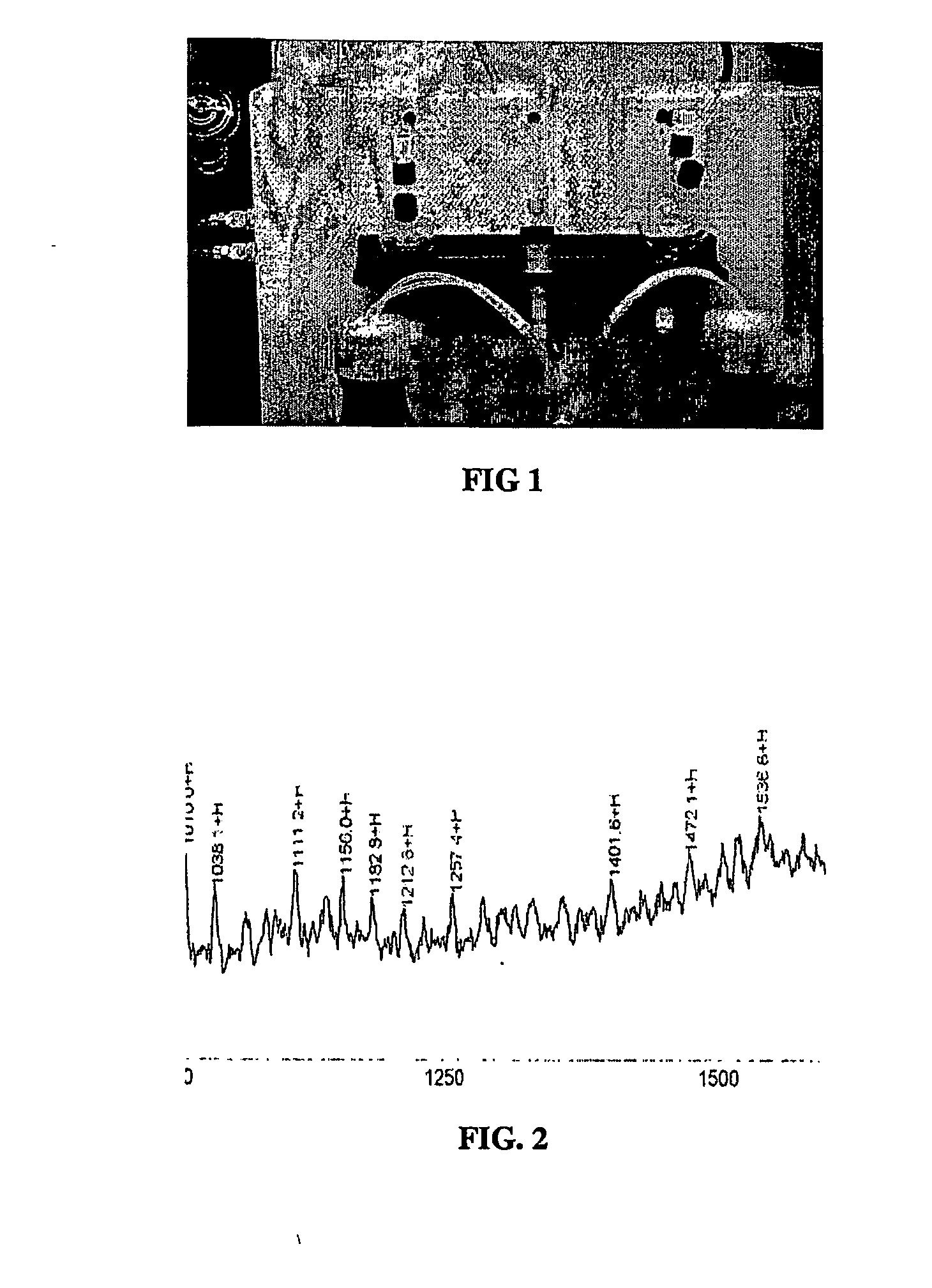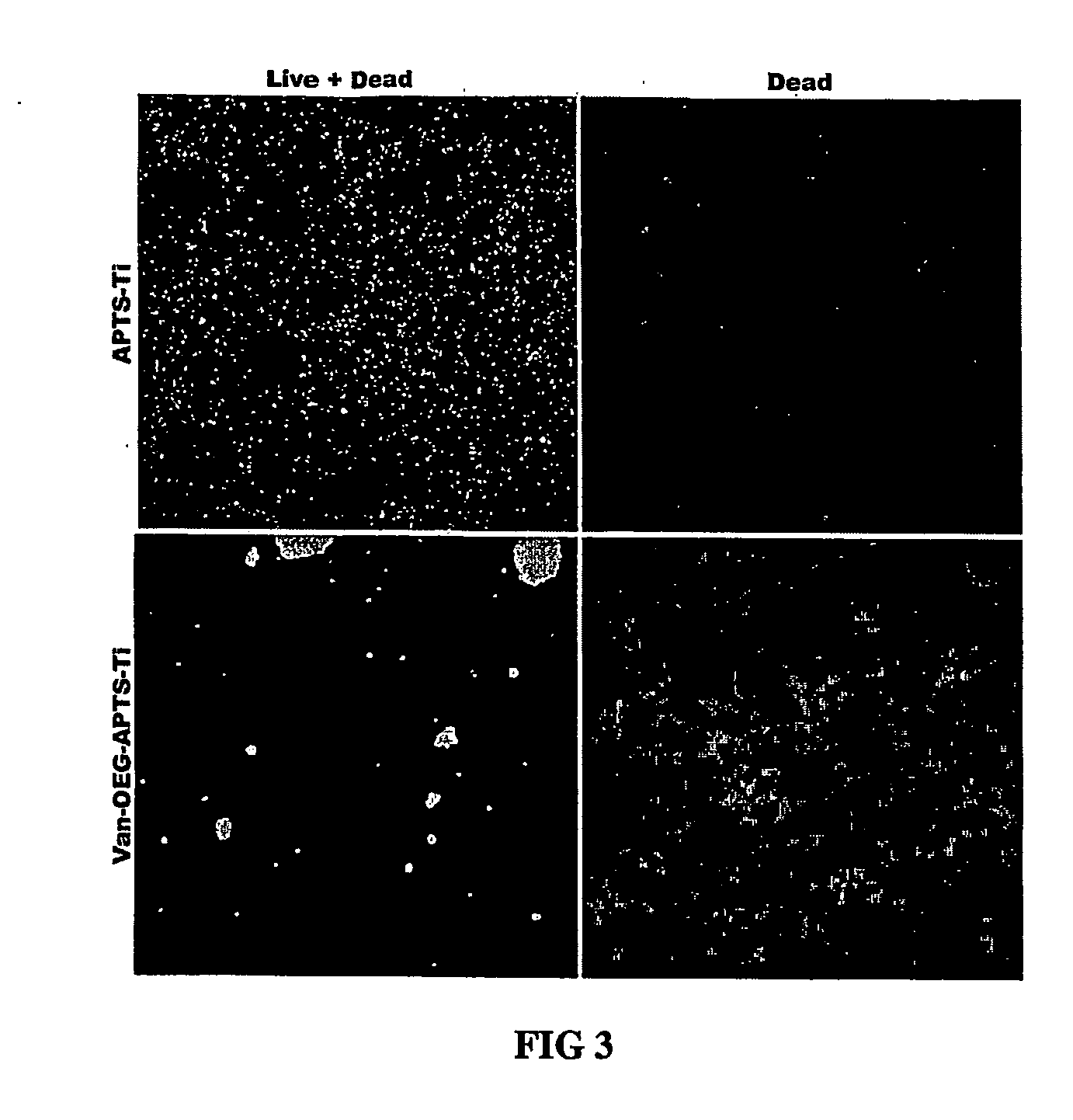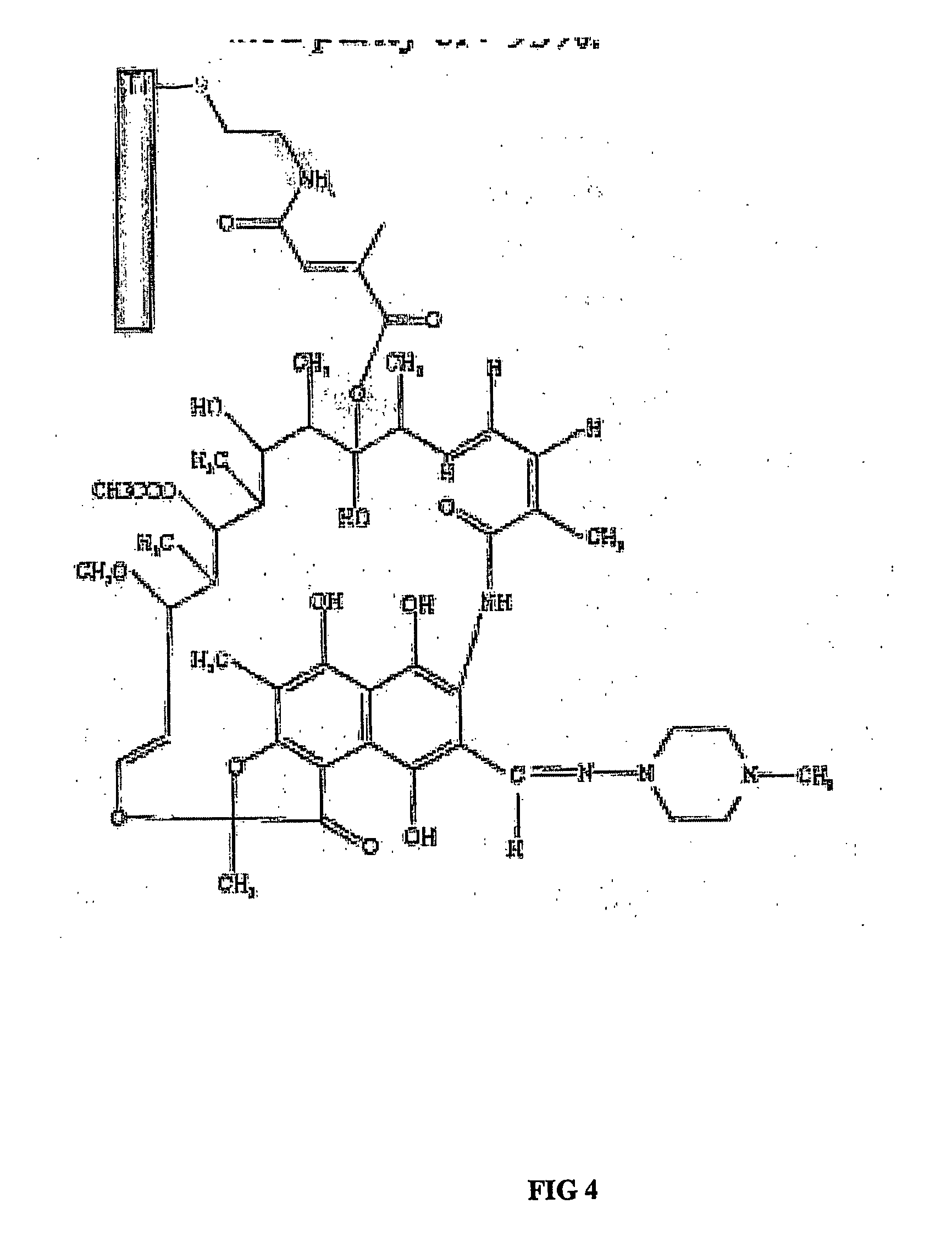Implants with attached silylated therapeutic agents
a technology of silylated therapeutic agents and implants, which is applied in the direction of angiogenin, prosthesis, drug compositions, etc., can solve the problems of high probability of infection, and open fracture wounds from ballistic injuries, so as to prevent bacterial proliferation, promote osseointegration, and inhibit bacterial proliferation
- Summary
- Abstract
- Description
- Claims
- Application Information
AI Technical Summary
Benefits of technology
Problems solved by technology
Method used
Image
Examples
example 1
[0088] This example illustrates that implants may be derivatized by covalently bonding bioactive peptides to their surfaces.
[0089] Aminopropyl triethoxy silane (APTS) linkers can be used that allow reactions of peptides or molecules containing peptide-like moieties. Specifically, RGD (SEQ ID NO: 1) peptides were covalently bonded to a silicon wafer using APTS as a derivatizing agent. The presence of RGD (SEQ ID NO: 1) on the surface was determined by time-of-flight secondary ion mass spectrometry and surface roughness was measured by AFM. The APTS alone caused a larger increase in roughness than reaction with APTS-linked RGD (SEQ ID NO: 1), probably the result of multiple layers of APTS. Inclusion of (CH3)2NCHO washes and sonication after the silanization step ensures that only covalently bonded ATPS organosilane remain on the surface, with the unbound APTS removed. This experiment demonstrates that RGD (SEQ ID NO: 1) is directly linked to the silicon surface via the APTS linker.
[...
example 2
[0092] This example shows how a therapeutic molecule that is an antibiotic may be immobilized by covalent bonding to an implant surface. An antibiotic can be immobilized on a Ti surface and that the tethered antibiotic maintains its antibacterial activity. Vancomycin can be used as a representative antibiotic.
[0093] For this purpose, a 4.37 g sample of 350 mesh Ti6Al4V particles were cleaned with 5 mL of 50% MeOH / 50% conc. HCl for 20 min. at room temperature, with vortexing for 20 sec. at 0, 5, 12, 15, and 20 min. The particles were washed twice with 5 mL of double-deionized water, then four times with 5 mL of anhydrous dimethylformamide [(CH3)2NCHO]. After removing remaining (CH3)2NCHO supernatant, the particles were dried overnight under vacuum in the entry chamber of a Vacuum Atmosphere MO-20M glove box. Next morning, the particles were taken into the argon atmosphere chamber of the glove box and washed twice with 10 mL of anhydrous toluene, resuspending them with a stainless st...
example 3
[0099] This example illustrates the bactericidal activity of a therapeutic antibiotic molecule vancomycin bonded to an implant surface, VAN-Ti, against S. aureus infections.
[0100] To assess the bactericidal activity of the Ti-grafted antibiotic, the following experiment was performed. Ten μL of an overnight culture of S. aureus was inoculated into 2 mL of LB / 1% dextrose, incubated for 2 h at 37° C. with vigorous aeration, pelleted, resuspended in 1 mL and 10 μL of that culture used to inoculate wells containing 200 μL PBS / 1% dextrose and APTS-derivatized Ti, VAN-Ti, or PBS alone; modified Ti samples had been subjected to three PBS washes prior to use. Samples were incubated for 1 h at 37° C., washed with PBS, and stained with the Live / Dead® BacLight™ Bacterial Viability Kit (Molecular Probes). Live and dead bacteria were visualized by confocal microscopy. The results of representative fields resulting from this treatment are presented in FIG. 3. S. aureus incubated on Ti that has b...
PUM
| Property | Measurement | Unit |
|---|---|---|
| pH | aaaaa | aaaaa |
| pH | aaaaa | aaaaa |
| pH | aaaaa | aaaaa |
Abstract
Description
Claims
Application Information
 Login to View More
Login to View More - R&D
- Intellectual Property
- Life Sciences
- Materials
- Tech Scout
- Unparalleled Data Quality
- Higher Quality Content
- 60% Fewer Hallucinations
Browse by: Latest US Patents, China's latest patents, Technical Efficacy Thesaurus, Application Domain, Technology Topic, Popular Technical Reports.
© 2025 PatSnap. All rights reserved.Legal|Privacy policy|Modern Slavery Act Transparency Statement|Sitemap|About US| Contact US: help@patsnap.com



